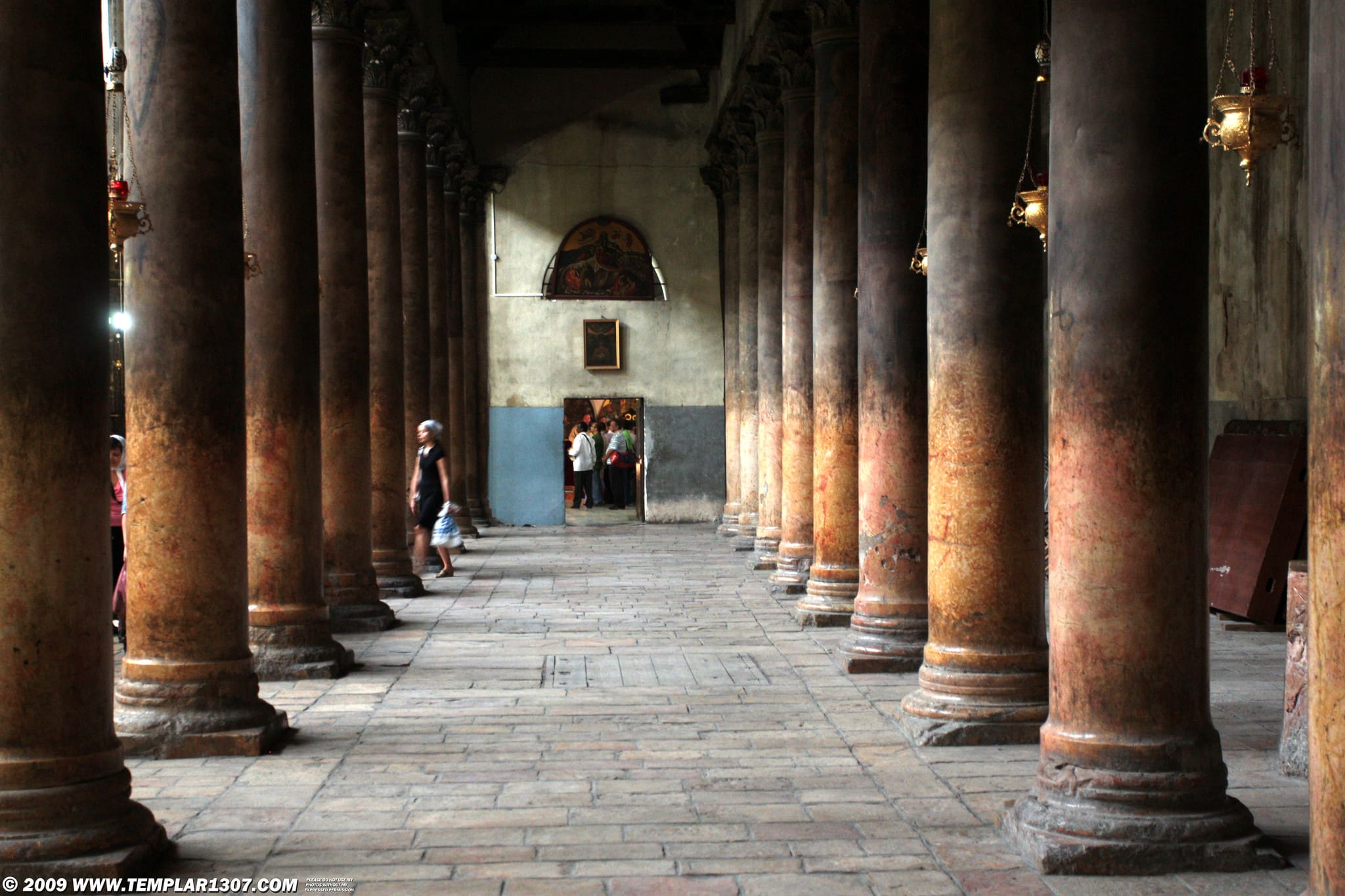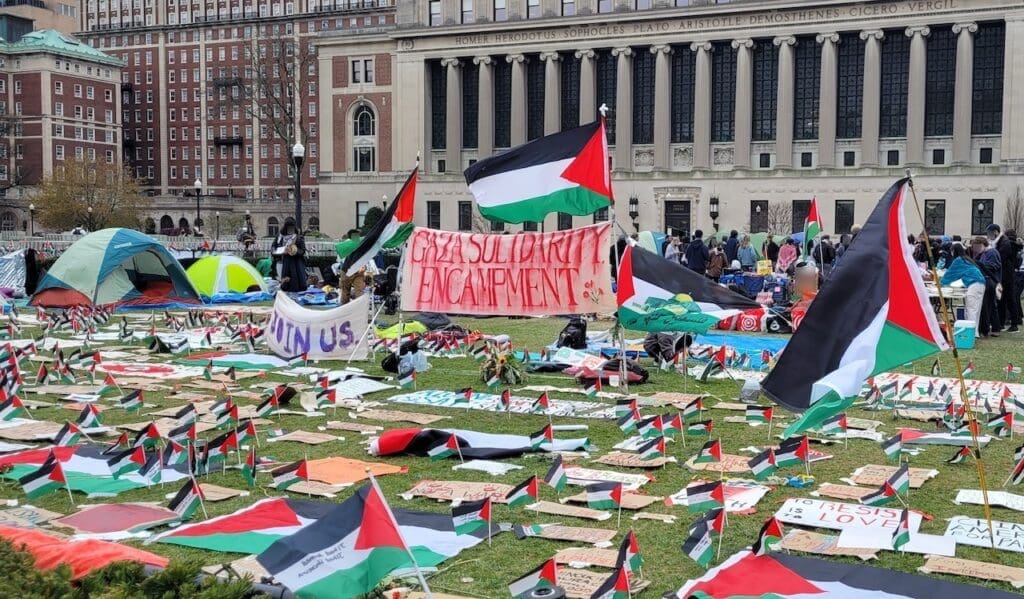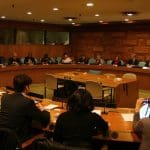
Overview
Palestine gained membership of UNESCO in 2011 but its representatives have not yet made best use of this new status due in part to pressure by Israel and the United States. Al-Shabaka Policy Member Nidal Sliman and Guest Author Valentina Azarov review the value of UNESCO in the quest to fulfill Palestinian rights and to apply the relevant international law instruments to the case of Palestine. They make a compelling argument that Palestine can gain significant practical advantages from its UNESCO membership, including reasserting sovereignty over its land and sea and obliging third states to hold Israel accountable for its obligations.1
Why UNESCO Membership Is Important
The day after Palestine gained membership of the United Nations Educational, Scientific and Cultural Organization (UNESCO), which took place on 30 October 2011, Israeli Prime Minister Benjamin Netanyahu accelerated the construction of 2,000 settlement homes, and froze Israel’s participation in UNESCO’s budget.
The United States also cut off funds to UNESCO following Palestine’s membership. The Administration claimed that legislation passed in the 1990 and 1994 forced it to do so. The U.S. also put forward the paradoxical argument that membership – which was based on, and solidified, Palestine’s status as a state – undermined the goal of a negotiated final status agreement that would bring about Palestinian statehood.
Yet even before Palestine gained membership, UNESCO had proved itself an important forum for upholding international law in relation to unlawful Israeli practices in the occupied Palestinian territory (OPT). For example, in 2010, UNESCO reaffirmed that Israel’s attempt to include the Haram al-Ibrahimi/Tomb of the Patriarchs in Hebron and the Mosque of Bilal bin Rabah (Tomb of Rachel) in Bethlehem on Israel’s national heritage list was “a violation of international law,” UNESCO conventions and the UN resolutions. The sites were removed from an Israeli list of sites for renovation in early 2012, reportedly due to financial considerations.
In the wake of UNESCO membership, Palestine ratified UNESCO’s constitution and became a state party to eight UNESCO conventions and related protocols, including the 1954 Hague Convention on the Protection of Cultural Property in the Event of Armed Conflict and its two protocols. Particularly important is the Second Protocol to the Convention, which provides for individual criminal responsibility and sanctions under the principle of universal jurisdiction. Indeed, Article 15 of the Protocol provides for states to seek out and prosecute perpetrators of the acts listed in the Article in their domestic courts, regardless of the perpetrator’s nationality, as is the case regarding Article 146 of the 1949 Fourth Geneva Convention.
Palestine has also made some concrete gains: It listed its first World Heritage site, the Church of the Nativity in Bethlehem, in June 2012, despite some protests in the U.S. Twelve other sites remain on Palestine’s tentative list. However, in June 2013, Palestinian representatives succumbed to pressure from Israel and the U.S. in the wake of Secretary of State John Kerry’s initiative to restart Israeli-Palestinian negotiations, and dropped a bid to include some 400 kilometers of landscape terraces in Battir village on the List of World Heritage in Danger, shelving a detailed nomination file that has been prepared with support from acclaimed international experts. Had they pushed forward with the bid, Palestinian representatives might have helped forestall Israel’s plans to construct part of its Wall in the village’s vicinity, which are currently being challenged at the Israeli High Court.
In May 2013, Israel called off a UNESCO mission to Jerusalem, to which it had previously agreed in a deal brokered by the Russians in exchange for Palestine postponing five UNESCO resolutions on Israel’s changes to the city. On 5 October 2013, UNESCO passed six resolutions condemning Israel’s unlawful conduct.
Palestine’s UNESCO membership offers a test case for furthering the protection of human rights and respect for international law at both national and international levels. The affirmation of Palestine’s status as a state by its UNESCO membership creates an authoritative precedent for UN observer states to join other international institutions and to ratify a list of international treaties for which the UN Secretary-General is a depositary, including the Rome Statute of the International Criminal Court. Palestine would strengthen its ability to claim respect for rights by bringing third party states and international actors around to demanding that Israel alter its practices in accordance with international law.
Destruction and Appropriation of Palestinian Heritage
For almost a century, Palestinian cultural heritage located in what is today Palestine and Israel has been subjected to destruction and appropriation by different administrations. Since 1967, Israel has damaged and destroyed historical, cultural, religious and natural sites throughout the OPT. Immediately after the occupation, Israeli authorities razed the Moroccan Quarter in the old city of Jerusalem and seized historical and religious buildings, such as the Palestine Archaeological Museum (now known as the Rockefeller Museum). Since its illegal annexation of East Jerusalem, which is not recognized by any other country, Israel has subjected the city’s cultural heritage to its national legislation. Ongoing archaeological projects include the “City of David” park, located in East Jerusalem’s Silwan neighborhood. In October 2011, the Israeli High Court ignored Israel’s obligations under UNESCO treaties and protocols and deemed the archaeological works as consistent with Israel’s domestic law.
An equally shocking example is the Simon Wiesenthal Centre’s construction of the Museum of Tolerance in West Jerusalem, which entailed excavations at the ancient Mamilla Cemetery with hundreds of exhumations of graves and remains. Dating from the 7th century, the cemetery was designated as an antiquities site in 1944 by the British Mandate authorities. The excavations continue in violation of Israel’s obligations under the 1972 UNESCO’s World Natural and Cultural Heritage Convention and the International Covenant on Economic, Social and Cultural Rights. The US Center for Constitutional Rights has filed a petition to U.N. bodies and the Swiss government on behalf of Palestinian descendants of those buried at the Mamilla Cemetery in Jerusalem.
In the West Bank, Israeli military operations in the Old City of Nablus in 2002 resulted in extensive damage of cultural heritage, including structures dating to the Roman, Byzantine and Ottoman eras. Some have argued that the 2002 Israeli military attack of the Church of the Nativity was a war crime. Israel has, in addition, used archaeology as a pretext to forcibly transfer Palestinian residents, demolish villages and gain territorial control over Palestinian land to further its illegal settlement project and exploit the OPT’s natural resources.
There is a strong argument that each of these cases violates Israel’s legal obligations as a party to the 1954 Hague Convention and its First Protocol, as well as its obligations under other international laws. Even the US State Department 2009 religious freedom report notes the discriminatory nature of Israel’s policy in protecting and funding only Jewish holy sites while neglecting many Muslim and Christian sites, many of which are “threatened by property developers and municipalities.” However, to date, Israel’s legal obligations have not been enforced.
International Law and Protection of Cultural Property
The 1954 Hague Convention for the Protection of Cultural Property in the Event of Armed Conflict and its First Protocol complement and reinforce the protections afforded to cultural property by the 1949 Fourth Geneva Convention and 1907 Hague Regulations. Article 4 of the Hague Convention requires states to shield cultural property from attacks and other “destruction or damage” unless “military necessity imperatively requires such a waiver.” The 1954 Convention’s prohibition against pillage of cultural property complements the general prohibition of pillage in Article 33 of the Fourth Geneva Convention, applicable to both the Occupying Power and private individuals.
International criminal tribunals have experience in prosecuting crimes related to destruction and restitution of cultural property. National courts, however, have proved to be a less promising venue because they are neither politically compelled, nor internationally regulated in the manner in which they pursue alleged perpetrators. Many of the universal jurisdiction cases lodged against Israeli officials in national systems across Europe and the US were quashed for political reasons.
The Convention deals specifically with situations of belligerent occupation. Article 5, of the convention and Article 9 of the Second Protocol limit an occupier’s authority to, at most, supporting “the competent national authorities of the occupied country in safeguarding and preserving its cultural property.”
The Convention codified the customary prohibition on the export of cultural property from the occupied territory. In addition, the illicit trade in artifacts, including those excavated in occupied territory, is prohibited under the 1970 UNESCO Convention on the Means of Prohibiting and Preventing the Illicit Import, Export and Transfer of Ownership of Cultural Property, to which Palestine is now a State Party.
Protecting Heritage – and Reasserting Sovereignty
UNESCO has repeatedly condemned unlawful practices under Israel’s occupation of the Palestinian territory, including Israel’s practices in Jerusalem, occupation of sites in the old cities of Palestinian population centers across the West Bank; and censorship of Palestinian schools and universities.2 Such moves are significant not only for their assertion of UNESCO’s condemnation of Israel’s acts, but also because they led UNESCO to condition Israel’s participation in UNESCO programs and other membership benefits on its compliance with its obligations. This was the case in 1974, for instance, when Israel’s widely-condemned excavations in the Old City of Jerusalem led UNESCO to suspend all its aid to Israel.
Article 1 of the International Law Commission’s Articles on State Responsibility provides that “every internationally wrongful act of a State entails the international responsibility of that State.”3 Once the responsibility of a state for an internationally wrongful act is established, several legal consequences follow. Most important is the obligation of the responsible state in Article 31 “to make full reparation for the injury caused by the internationally wrongful act.”
International law provisions are most susceptible to effective enforcement when third states are compelled to uphold their own commitments and legal obligations, including domestic laws that incorporate their international law obligations. Canada’s position regarding the Dead Sea Scrolls is a good example of how third state obligations would have worked in Palestine’s favor had it been a member of UNESCO at that time. In 2010 the Dead Sea Scrolls, which the Israeli military had unlawfully removed from the Palestine Archaeological Museum in East Jerusalem in 1967, were on exhibition by the Israel Antiquities Authority at the Royal Ontario Museum.
Although State parties to the 1954 Hague Convention are obligated to take into their custody cultural property imported into their territories directly or indirectly from occupied territory, Canada refused to do so. Under Canada’s domestic law, only a member state of UNESCO could seek a court order to enforce a request to seize illegally imported cultural property. Thus, at the time, Palestine did not have standing before Canada’s courts. However, Palestine’s subsequent ratification of the 1954 Hague Convention and its two protocols, and the 1972 Illicit Trade Convention, mean that Palestine now does have standing under various member states’ domestic laws. It can request them to communicate what artifacts of Palestinian origin are in their possession, take the artifacts into custody and prevent their export or exhibition, pending their return to their geographic origin.
The significance of the potential for action cannot be overstated. The Palestinian Ministry of Tourism and Antiquities and Israeli sources estimate that between 1967 and 1992 about 200,000 artifacts were removed from the occupied Palestinian territory annually, and another 120,000 or so were removed each year since 1995. Examples where countries have been able to organize the return of their artifacts include the 1993 Agreement between Israel and Egypt, which provided that “all artifacts and finds from Sinai will be returned to Egypt within the next two years.”4 Ethiopia managed to retrieve a 1,700-year-old obelisk from Italy without the need for an agreement, and is seeking the return of many other objects and ancient artifacts looted by British troops and later locked up in British museums.
Palestine could also invoke its rights under the 2001 Convention on the Protection of Underwater Cultural Heritage, which it ratified in 2011, to help it assert control over Palestine’s waters off the coast of the Gaza Strip. For several years, Israel has been imposing a highly restrictive naval blockade, limiting Palestinian access to between 6 and 9 nautical miles of its territorial waters.
This blockade could be challenged through the central element of the 2001 Convention: its delineation of each state’s territorial sea. Article 7(1) provides states with the “exclusive right to regulate and authorize activities directed at underwater cultural heritage in their internal waters, archipelagic waters and territorial sea” – the part of a state’s sovereign territory that extends up to 12 nautical miles from its coastline according to Articles 2 and 3 of the 1982 UN Convention on the Law of the Sea. Articles 8 and 23 also grant states the right to “regulate and authorize activities directed at underwater cultural heritage” within a further 24 nautical miles in which competence is exercised for special purposes. States are also responsible for the regulation of any exploration activities in their exclusive economic zone and continental shelf, which extends up to 200 nautical miles.
Palestine could consider following the example of the Netherlands. The Dutch government established a contiguous zone to prevent infringements of its cultural heritage rights and explicitly extended the scope of its forthcoming heritage legislation to its territorial seas and the contiguous zone. In Palestine’s case, equivalent measures could create an archaeological zone of control extending up to 24 nautical miles off the coast of Gaza. This could challenge Israel’s discoveries of wrecks off Gaza’s coast and such activities and re-establish control over Gaza’s potential underwater heritage.5 Palestine could also claim control over the resources of the Dead Sea and its territory, which is presently under Israel’s near-exclusive control.
Clearly, if properly utilized, the UNESCO framework could not only support Palestine’s ability to regain control and possession over its cultural heritage but also to exercise sovereign rights over its territory for the purpose of administering heritage sites. Such measures would also restrict Israel’s ability to submit Palestinian sites on its national Heritage List to UNESCO. By strategically mobilizing its enhanced political and legal standing in the international system, Palestine could garner support to require Israel to provide full reparations for wrongs, including restitution and compensation, particularly in cases of destruction or irreparable damage to Palestinian cultural property.
Palestine’s Duty to Protect Cultural Heritage
Statehood status and accession to international organizations and treaties can afford protection for rights, but they also entail obligations on the part of the state party. Thus, Palestine is required to modify its national legal system and relevant institutions in accordance with its obligations under the UNESCO Constitution and the eight conventions it has ratified.
The legislation currently in force in the OPT – composed of Ottoman, British mandatory, Jordanian (West Bank), Egyptian (Gaza Strip), Israeli, and Palestinian Authority (PA) laws (Legislative Council laws, Presidential Decrees, Council of Ministers regulations, and ministerial directives) – does not adequately protect Palestinian cultural heritage. It is fragmented, subject to Israel’s whims and does not meet international standards. For example, the 1929 version of the Antiquities Ordinance No. 51 that is still in force in the Gaza Strip, and the 1966 version applicable in the West Bank, only deal with tangible cultural heritage.
The Palestinian Basic Law obliges the President to “be faithful” to the homeland’s “national heritage.” Yet the role and mandates of the bodies officially responsible – the PA Ministry of Tourism and Antiquities and the Ministry of Culture, as well as the Palestine Liberation Organization National Commission for Education, Culture and Science – are not well defined, further impeding national capacity to protect national heritage.
And, of course, Israel restricts their area of operations: Israeli military orders enforceable in Area C of the West Bank vest all regulatory powers regarding cultural property in a military officer. In addition, Israel has extended the application of its domestic law to occupied East Jerusalem and declared all undiscovered artifacts in the city as its own in flagrant violation of international law. Nevertheless, as argued at the end of this section, it is important that the Palestinian authorities pass the necessary legislation in line with international standards: This will make it harder for Israel to continue to illegally remove Palestinian heritage from the OPT, and will enable the Palestinian authorities to pursue legal actions in third countries to recover such cultural properties.
With technical assistance from UNESCO, the PA Ministry of Tourism and Antiquities renewed the initiative to draft modern legislation in 2011. In 2012, two draft laws for the protection of tangible and intangible cultural heritage were prepared, in consultation with public and private stakeholders, which took account of Palestine’s international obligations under UNESCO’s Constitution and treaties, as well as international best practices, including model laws prepared by the World Intellectual Property Organization and the Arab League.
The main provisions of the 2012 draft law on tangible cultural heritage include the principle of public ownership of cultural heritage, a ban on the sale or transfer of such properties, and a mechanism enabling the local authorities to reclaim cultural properties illegally removed from occupied territory. The draft law itself obliges the state to seek ratification of international conventions aimed at protecting cultural heritage. However, the capacity and resources for the management and preservation of sites in Palestine remain limited, resulting in a backlog in documentation and preservation. The draft law seeks to address this state of affairs by establishing an independent Authority to preserve, protect and develop cultural heritage in Palestine.
The 2012 draft law concerning intangible cultural heritage, which includes Palestinian folk dance, embroidery, and hikaye (a narrative expression practiced by women), among others, addresses the measures for safeguarding such heritage and defines the criminal offenses that can be perpetrated against it.
It is unfortunate that, given the Palestinian Legislative Council’s inactivity since 2007, due to Israeli restrictions as well as internal Palestinian politics, the laws’ formal enactment is unlikely to take place in the foreseeable future. Nor have the laws been submitted to the PA Council of Ministers for review and endorsement before submission to the President to issue a decree as he has done in other cases.
Palestine’s obligations under international treaty law, in addition to the urgent practical need to enhance protection of Palestinian cultural heritage in the face of threats, should be incentives to ensure conformity of Palestine’s own legislation and practice to international standards. The draft laws could, if enacted, significantly enhance Palestine’s national legal framework, deter domestic violations and further Palestine’s standing in third countries and international institutions to contest, prevent, and take measures against unlawful Israeli conduct.
For example, in a recent Judgment by Israel’s High Court, a defendant in a case involving illegal removal of cultural property from the OPT, claimed that since the law currently in force in the OPT does not declare all undiscovered cultural property to be that of the state (which is the case under Israeli law), it was the responsibility of the state prosecutor to prove that the cultural properties had been stolen. The Court rejected this argument; at the same time, it also ignored international law banning the removal of cultural property from the OPT. The issue only proves the urgency of enacting a strong unequivocal Palestinian law that declares all cultural property found in Palestine to be that of the state.
Conclusions and Recommendations
UNESCO conventions and instruments offer a framework of control and protection for Palestine’s cultural heritage, as well as access to international cooperation for the protection of cultural heritage, based on codified law. By strictly limiting the role of an occupying power in relation to excavations and use of cultural property in the occupied territory, the 1954 Hague Convention, amongst other instruments, protects the rights of the legitimate sovereign and its people over their cultural property and heritage during armed conflict.
With its newly-acquired UNESCO membership and its ability to accede to further treaties, Palestine today is better-equipped than ever before to seek the restitution of illicitly-removed or traded cultural properties, to assert control over its underwater heritage in the exclusive economic zone and territorial waters off Gaza, and to include national sites on UNESCO’s World Heritage List, removing them from the political negotiations agenda by securing its national sovereignty over them. Palestine is also better positioned to explore the potential of litigation and other legal measures in foreign domestic jurisdictions to facilitate the return of artifacts and bring Israeli officials involved in unlawful excavations to justice.
Palestine can claim its rights by engaging with UNESCO’s institutions as well as seeking to compel third states and international actors to pressure Israel to comply with its UNESCO obligations. In light of Israel’s record of unlawful acts in this domain (and others), any third state relations with Israel should be structured in a manner that guarantees Israel’s good-faith compliance with international law, to ensure the ability of the third state or international actor, such as the European Union, to respect its own international and domestic legal obligations.
In turn, Palestine should demonstrate its own good faith commitment to UNESCO’s protection framework by adopting the necessary legal and administrative measures in its national law, and seeking their enforcement, to the extent possible, as long as Israel continues to maintain principal control over Palestinian territory. The very inability of the local Palestinian institutions to enforce their national laws and policies demonstrates Israel’s violations of its international legal obligations, to say nothing of its theft, damage and destruction of Palestinian heritage.
It is in Palestine’s best interest to comply with the international legal obligations that come with membership, as well as consider its options for promoting them through UNESCO’s international fora and in the domestic systems of third states, whereby a notification procedure should be agreed in the context of UNESCO to facilitate return of cultural property to their geographic origins and context.
Adequate legal protection of cultural heritage on the national level will support Palestine’s efforts to reclaim possession of stolen cultural properties and further its efforts to regain control over its territory. Once Palestinian draft laws are agreed and finalized in consultation with all stakeholders, including the private sector and civil society, they should be taken through the existing PA legislative process. In parallel, a Palestinian inventory of documentation on transferred artifacts and site excavations should be devised.
Local and international civil society organizations should be more vocal in calling upon the Palestinian Government to take appropriate measures to protect cultural heritage in Palestine by adopting the draft laws, and strengthening national institutions entrusted with safeguarding cultural heritage in Palestine. Civil society organizations can also play an important role in raising awareness domestically and internationally on the need to separate the issue of protecting cultural heritage from the politics of the “peace process.”
Ultimately, the effective protection of Palestine’s cultural and natural heritage can only be attained by reconnecting the Palestinian people with that heritage. The proper utilization of the UNESCO framework, both nationally and internationally, is a critical step towards Palestine’s ability to gain control over its cultural heritage by ensuring that it is managed and governed by its sovereign law, in accordance with international standards.
- This brief draws on the authors’ research and practical work, including “Palestine, UNESCO and Archaeology in Conflict” by Dr. David Keane and Valentina Azarov (_Denver Journal of International Law and Policy_, Vol 41, No 3 (2013)) and “The Protection of Cultural Property in Occupied East Jerusalem: Archaeological Excavations and Removal of Cultural Property” by Dr. Nidal Sliman (_Thesaurus Acroasium: Multiculturalism and International Law_, Kalliopi Koufa ed., 2007)). Sliman reviewed and drafted legislation to protect cultural heritage with UNESCO and the Palestinian Authority, and Azarov conducted advocacy and research on the Palestinian statehood initiatives at the Palestinian human rights group [Al-Haq](http://www.alhaq.org/).
- Respectively: Jerusalem and the implementation of 35 C/Resolution 49 and 184 EX/Decision 12, Decision from 185th Session of UNESCO Executive Board (185 EX/14; 185 EX/52 Rev.); Implementation of 184 EX/Decision 37 on “the two Palestinian sites of al-Haram al-Ibrahimi/Tomb of the Patriarchs in al-Khalil/Hebron and the Bilal bin Rabah Mosque/Rachel’s Tomb in Bethlehem”, Decision from 185th Session of UNESCO Executive Board (185 EX/15; 185 EX/52 Rev.); and
Implementation of 35 C/Resolution 75 and 184 EX/Decision 30 concerning educational and cultural institutions in the occupied Arab territories, Decision from 185th Session of UNESCO Executive Board (185 EX/36; 185 EX/52 Rev.). - A UN organ that was established to assist the organization in the implementation of Article 13 of the UN Charter concerning the codification of customary international law.
- Cited in Talia Einhorn, ‘Restitution of Archaeological Artifacts: The Arab-Israeli Aspect’, 5 International Journal of Cultural Property (1996) 144.
- See Robert Ballard et al., ‘Iron Age Shipwrecks in Deep Water off Ashkelon, Israel’, 106 _American Journal of Archaeology_ (2002) 151. According to the map provided by Ballard et al., the closest land to the wrecks is Gaza, if a direct line is drawn from the indicated sites to the coastline.














